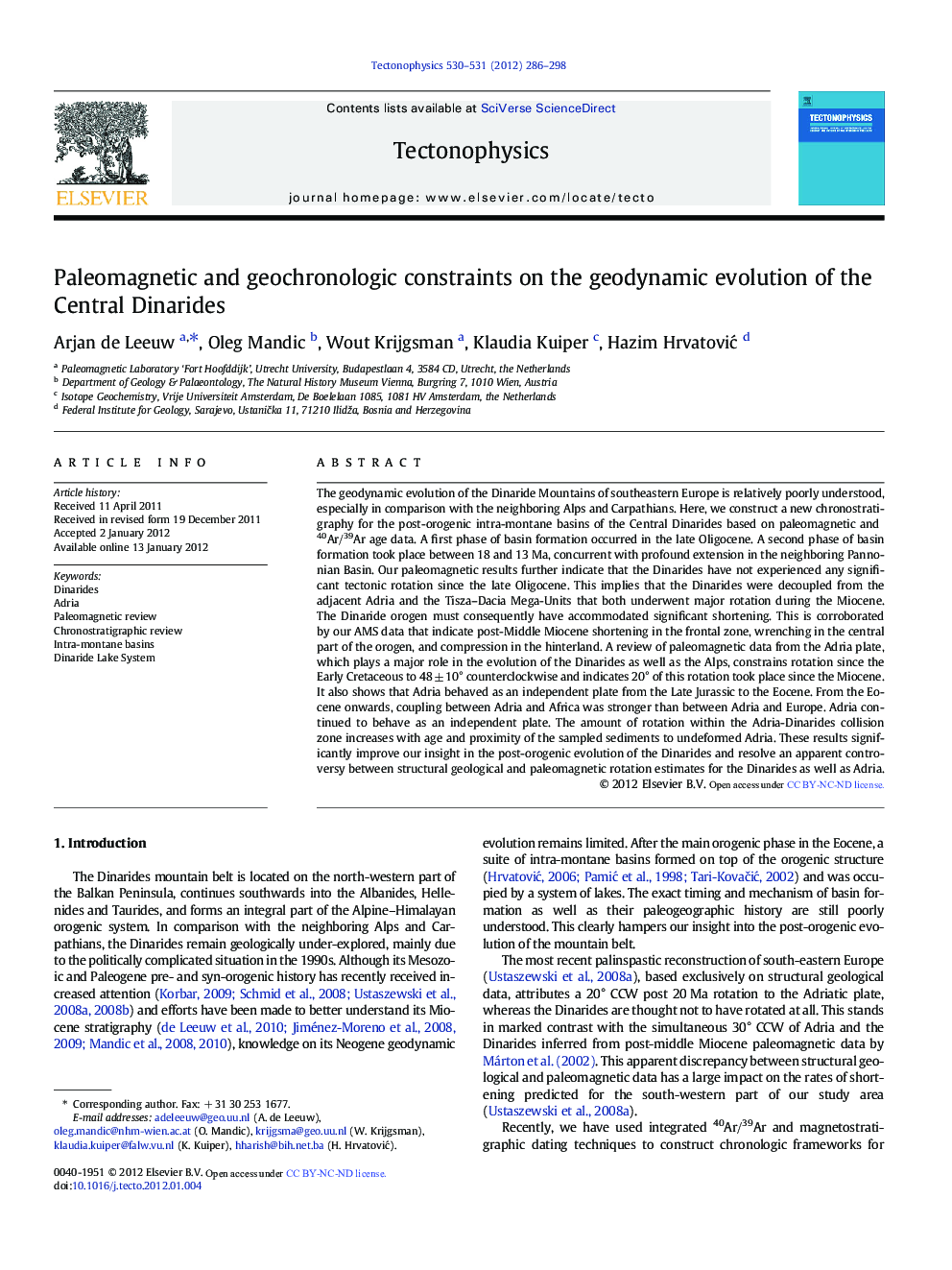| Article ID | Journal | Published Year | Pages | File Type |
|---|---|---|---|---|
| 6434283 | Tectonophysics | 2012 | 13 Pages |
The geodynamic evolution of the Dinaride Mountains of southeastern Europe is relatively poorly understood, especially in comparison with the neighboring Alps and Carpathians. Here, we construct a new chronostratigraphy for the post-orogenic intra-montane basins of the Central Dinarides based on paleomagnetic and 40Ar/39Ar age data. A first phase of basin formation occurred in the late Oligocene. A second phase of basin formation took place between 18 and 13 Ma, concurrent with profound extension in the neighboring Pannonian Basin. Our paleomagnetic results further indicate that the Dinarides have not experienced any significant tectonic rotation since the late Oligocene. This implies that the Dinarides were decoupled from the adjacent Adria and the Tisza-Dacia Mega-Units that both underwent major rotation during the Miocene. The Dinaride orogen must consequently have accommodated significant shortening. This is corroborated by our AMS data that indicate post-Middle Miocene shortening in the frontal zone, wrenching in the central part of the orogen, and compression in the hinterland. A review of paleomagnetic data from the Adria plate, which plays a major role in the evolution of the Dinarides as well as the Alps, constrains rotation since the Early Cretaceous to 48 ± 10° counterclockwise and indicates 20° of this rotation took place since the Miocene. It also shows that Adria behaved as an independent plate from the Late Jurassic to the Eocene. From the Eocene onwards, coupling between Adria and Africa was stronger than between Adria and Europe. Adria continued to behave as an independent plate. The amount of rotation within the Adria-Dinarides collision zone increases with age and proximity of the sampled sediments to undeformed Adria. These results significantly improve our insight in the post-orogenic evolution of the Dinarides and resolve an apparent controversy between structural geological and paleomagnetic rotation estimates for the Dinarides as well as Adria.
âºWe provide a detailed chronology for the intra-montane basins of the Dinarides. âºIt provides a framework for our understanding of their evolution. âºPaleomagnetic rotation data from the Central Dinarides show no rotation since the Oligocene. âºControversy between paleomagnetic and structural constraints on rotation is resolved. âºThese results enhance insight in the syn- and post-orogenic evolution of the Dinarides.
